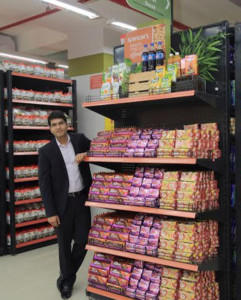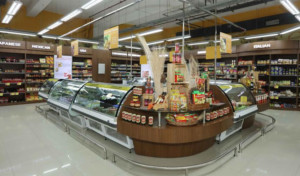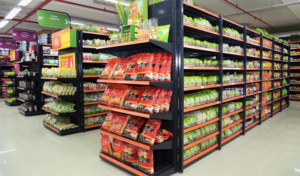Sector Head – Spencer’s Retail Limited, RP-Sanjiv Goenka Group, Shashwat Goenka, was all of 23 when he joined the family business and took the reins of Spencer’s retail in his hands. On one hand he had to rescue the dwindling grocery retail business and on another he had to head a team of men those were much senior to him in age and experience.
But the young Goenka concentrated and sharpened his vision – to be the most preferred and most profitable hypermarket retailer in the country. It’s his hardwork and leadership prowess that has resulted in reducing company’s EBITDA loss from Rs 300 crore a few years ago to Rs 30 crore for the year ended March 2016.
 When you took over the leadership position in Spencer’s Retail in 2013, this chain was suffering from heavy losses. What was the first thought in your mind after you joined as the head of this hypermarket chain?
When you took over the leadership position in Spencer’s Retail in 2013, this chain was suffering from heavy losses. What was the first thought in your mind after you joined as the head of this hypermarket chain?
Retail for me has always been a passion. Hence, the task of leading Spencer’s was something that I found interesting, right from the very beginning. One of the initial challenges I had was to lead a group of much older people, elder both in age and experience, and I was just 23 years old. On the industry knowledge front, I had a steep learning curve. Grocery modern trade itself was a nascent industry at the time, and both consumers are retailers were grappling to find a suitable business model. Some of the key learnings I had early on were the unpredictability of retail, and that India is extremely diverse from a consumer preference standpoint, and one size does not fit all.
The first ever hypermarket in India was launched by Spencer’s in 2000. It is a pioneer in its own way. What went wrong that it lost momentum and was lagging behind from others?
I would differ on this point. Yes, Spencer’s was a pioneer in modern trade grocery and hypermarket retail in the country. However, I do not believe that we are lagging behind from the others in today’s context. When we launched, organized retail was evolving in the country and was at its infancy. The Market’s adoption rate of self-service formats was slow. Even today, modern trade forms less than 10 per cent of the overall retail market. We went through our own series of learnings, like our competitors did too. A few years ago, we took a conscious call that we would strive to be the most profitable hypermarket player in the country, not necessarily the largest in terms of trading area or number of stores. If you see many of the operational and consumer parameters, you will see that Spencer’s is leading the industry.
 What were the initiatives, that were taken to revamp Spencer’s?
What were the initiatives, that were taken to revamp Spencer’s?
When I took charge of Spencer’s, one of the first things I did was to sharpen its vision – to be the most preferred and most profitable hypermarket retailer in the country. This meant excellence in customer service, a change in the company’s attitude toward customer centricity, and being the most operationally efficient to deliver positive bottom-lines.
One of the key strategies was to grow profitability. This meant growing top-lines and margins. For revenue growth, we planned to focus on hypermarkets (which allowed us to capture a higher basket size of the consumer), with a focus improving fill rates and product availability.
Over the last few years, we have taken the revenue from Rs 600 per square foot to Rs 1500 per square foot. For margin growth, the company is starting to focus more on higher margin categories of apparel and general merchandise, as well as a push on private label products for select categories. We also looked to reduce costs. The organization was restructured to become flatter, allowing faster decision-making – both at the corporate and at the store.
Non-performing stores and regions were closed, with 51 stores being closed in FY13 itself. Systems, people and processes were put in place to enable quick turnarounds and decisions, and were aligned with the company’s overall goal.
The company’s EBITDA loss reduced from Rs 300 crore a few years ago to Rs 30 crore for the year ended March 2016.
What according to you is the USP of Spencer’s?
Spencer’s key USP is that it focuses on customer centric innovations – it was the first hypermarket to offer a live bakery; A few years ago it launched Epicuisine, a concept which merges foods from different cuisines into one place, with an experiential play. It’s also recently launched a Nuttie Delights section, which carries over 200 varieties of nuts and spices, many of which are exclusively available only at Spencer’s stores. ‘Delighting the consumer’ is the mantra that we follow for any of our innovations, and try to have at least three or four such innovations every year.
Spencer’s is still a food-first retailer. But in order to add leverage, it has to shift focus on non-food categories as well, which is still not prominent in Spencer’s. What is your plan regarding that?
Yes, Spencer’s has been a food-first retailer, and consumers know us more for our food than our non-food assortment, with food and grocery constituting almost 80 per cent of our revenues.
Consumers view us as synonymous with quality, and hence their preferred food destination, and now we plan to extend a similar offering in the non-food space. Over the last few quarters we have increased our focus on the non-food categories of apparel and general merchandise. Margins and average selling prices are higher for these categories, resulting in higher returns for us. Our expansion strategy of focusing mainly on hypermarkets also ties into this proposition. From a consumer perspective, it becomes easier to shop everything from grocery to clothing to home needs under one roof. Our shoppers have already started noticing a change in these categories in the store, and will notice many more in the next few months to come.
 How are you planning to transform Spencer’s from combination of small local stores to ‘only’ hypermarkets chain?
How are you planning to transform Spencer’s from combination of small local stores to ‘only’ hypermarkets chain?
Historically, Spencer’s started as essentially a supermarket and convenience store retailer. In 2001 it opened its first hypermarket in Hyderabad, which was the first hypermarket in the country. Hypermarket has been an integral part of our DNA and offering – hence it is not about making it an ‘only’ hypermarket chain. We have over 80 small stores which we presently operate, and are not looking to close them. We will run a portfolio of small stores and hypermarkets, but the focus will be on growing the hypermarket business by adding more large stores.
What is your idea about a general Indian consumer, who shops from a hypermarket?
The Indian consumer is gaining more exposure through easier modes of travel to other parts of the world, as well as through social media and the internet. Hence, their demands for more global products and more refined products to meet their specific requirements are also increasing. There is a faster rate of urbanization as well, especially in the top 100 cities of the country. Income levels are rising for the middle class, which is driving aspirational consumer behavior and a strong premiumisation trend. Consumers are also moving to more nuclear families which is creating a demand for value added products and services. These are the consumer who shop at hypermarkets.
Another interesting observation is that hypermarket shopping is viewed as a recreational family activity, and not as a chore.
Future plans for expansion of Spencer’s?
Spencer’s will add over 70 hypermarkets over the next 4-5 years, predominantly focusing on the Northern, Eastern and Southern parts of India.
Do you have any time limit set in your mind, within which you will make Spencer’s a profitable entity?
All our best efforts are being put forward to ensure profitability. We have had a few profitable months at corporate EBITDA level over the last 12 months, and are confident of reaching sustainable positive corporate EBITDA soon.
Shashwat Goenka's hardwork and leadership prowess that has resulted in reducing company’s EBITDA loss from Rs 300 crore a few years ago to Rs 30 crore for the year ended March 2016
Must Read



